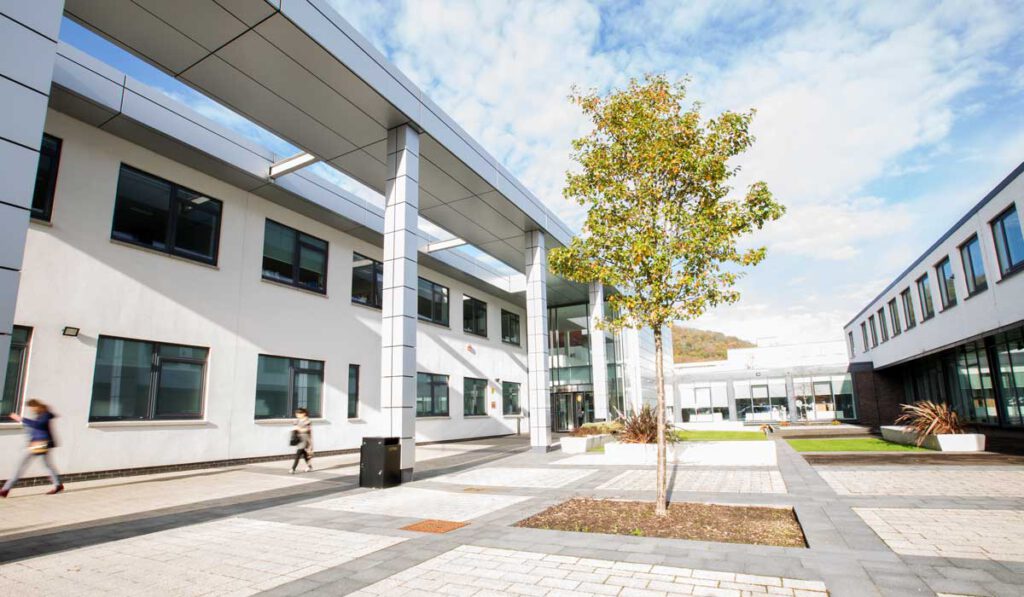Conscious college continues to reduce carbon footprint

Building sustainability is a key strategic objective within Borders College’s Strategic Plan, with the Facilities Management team making continual efficiencies at the Scottish Borders Campus in Galashiels.
A Key Strategic Indicator within the College’s Strategic Plan is to measure progress in reducing its carbon footprint, in relation to both the size of the estate and its income. Facilities Manager, Robert Hewitt, oversees much of the work being done to reduce carbon dioxide (CO2) emissions and has recorded a 30% reduction over the past 4 years.
In addition to the College’s existing sustainable initiatives such as solar panels and 2 electric cars, recent improvements include replacing free-to-use disposable plastic cups with reusable drinking bottles (sold at £1 each, encouraging everyone to take active responsibility for the wider impact of waste plastics), continuing to upgrade LED light fittings across all sites, and replacing the main College car fleet with vehicles of reduced engine capacity which produce lower emissions than the previous fleet.
The College Energy Efficiency Pathfinder (CEEP) provided a source of funding towards reducing electricity consumption if an organisation can evidence a guaranteed energy cost saving, and recent r
eports show that the College exceeded its projected savings, reducing electricity consumption by an average of 19% per annum.
However, the star performer continues to be the SHARC waste water heating system. With 2 national award wins, a ministerial visit from Claudia Beamish MSP, as well as a visiting party of delegates from Northern Ireland across the past year, the now well-established project has attracted significant interest as the flagship installation of its kind in the UK.
After becoming fully operational in December 2015, the project will soon enter its second phase which is expected to be completed by next summer. Phase 2 will involve reducing the Scottish Borders Campus’ 5 existing gas boiler rooms down to one, removing ten existing 20-25 year old boilers. SHARC also propose to install a new photovoltaic thermal hybrid solar collector system (combining electricity generation and hot water production) to a section of the campus roof, providing renewable electricity to the on-site SHARC centre, and a new battery power storage system and in turn enabling the College to take advantage of cheaper rate zones for electricity by sourcing and storing electricity from the national grid at off-peak times.
Robert explains:
“The national grid is also now greener – 98% of electricity generated in Scotland in October was from a renewable source, effectively meaning that heating at the Scottish Borders Campus through the SHARC heating system during October was only 2% away from being carbon neutral, quite an achievement. Completing Phase 2 will only enhance an already highly efficient system.
“There has been a gradual increase in the SHARC project’s output, and in time, the College’s use of fossil fuel and the associated costs are both expected to reduce significantly, thereby achieving true sustainability.”
Implementation of the Carbon Management Plan is intended to help bridge the gap between current energy costs and their future predicted rise, something it has certainly achieved – figures submitted to the Public Sector Climate Change Report by Robert show that Borders College has brought its tonnes of CO2 emissions (tCO2e) down by over 30% since the 2014/15 academic session, down from 806 tCO2e in 2015 to 556 tCO2e in 2018.











Responses